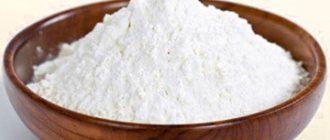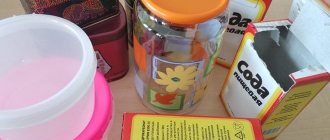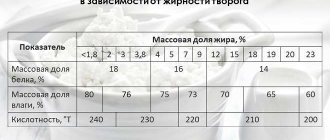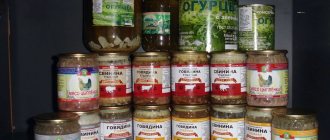Sugar is a carbohydrate that a person needs in moderate quantities to provide the body with glucose and fructose. It helps produce energy and promotes normal brain activity. This bulk product is found in almost every home. Sometimes it is bought in large quantities for making jam, so as not to overpay for it during the harvesting season. Despite the fact that this product can retain its qualities for quite a long time, you should know how to store sugar so that the product does not become too moist and does not acquire an unpleasant odor.
How to choose
Wet sugar, which is sometimes found on sale, was most likely stored incorrectly. But some sellers deliberately keep it in conditions of high humidity in order to increase the weight of the product.
Appearance is what you should pay attention to first. A product that has been stored and transported correctly must be:
- loose (not wet);
- without lumps;
- painted white without a yellow tint;
- have a pleasant faint sweetish odor;
- do not contain foreign inclusions in the form of various debris.
Due to the increased hygroscopicity of the product, when located next to water, it is able to absorb 4 - 5 liters of liquid in 10 days. This is precisely the trick that unscrupulous sellers resort to in order to increase the weight of the goods.
You can determine the moisture level of a product by squeezing it in your hand. If the sand is dry, it will crumble when you unclench your fingers, and if it is wet, it will remain a lump.
An important factor when storing sugar is its proximity to other products. Next to it should ideally be cereals, pasta or confectionery in closed packages. Those. products that do not have a pronounced odor.
You should not buy products that have been close to spices and other products with a strong smell (sausages, fish), since it will be impossible to get rid of the smell later.
The original packaging in which the product is located must be hermetically sealed. In this case, granulated sugar may cake a little during storage. But it should quickly crumble with the slightest shaking, without forming lumps.
What to do if the expiration date has expired
If stored properly, sugar can remain of high quality for a long time. Even after the expiration date indicated on the package, under optimal conditions it will be suitable for food.
Do you know that…
If the product's shelf life in production warehouses has expired, sugar is not used in the food industry.
If stored improperly, the product loses its properties - color changes, flowability changes, and an unpleasant odor appears. If you have purchased a low-quality product or it has spoiled in your home, do not despair and do not rush to throw it away.
- You can make syrup, jam, and confiture from wet granulated sugar with lumps.
- If there is an unpleasant odor, then the best option is to make homemade alcohol from it (liqueurs, liqueurs, home brew for moonshine). The smell will disappear during fermentation.
Sugar syrup is useful not only in cooking, it is used to feed bees and even for hair removal (sugaring)
How to make jam from lumps
Sprinkling sugar over the berries with large lumps will not work, so first you need to make syrup from it.
- Pour 1 kg of granulated sugar into 100 ml of water.
- Place on the stove to heat up.
- Stir until the crystals dissolve.
Pour berries into the syrup at the rate of 1 kg of fruit per 1.3 kg of sugar. Cook for 10-15 minutes.
Under what conditions should it be stored?
The storage temperature for granulated sugar is considered optimal if it corresponds to +12°C - +22°C. That is why storing sugar in bags on the balcony in winter is unacceptable. Unless, of course, the balcony is heated and the temperature on it is within optimal limits.
- Sugar should be stored in air humidity conditions no higher than 70%, otherwise it will become damp and lumpy.
- Factory compressed refined sugar can be stored at an air humidity of 75% (not higher).
- Storage of sugar in a warehouse at normal humidity and temperature conditions can last up to 8 years. And in conditions of low temperature, its storage time is reduced to 3–4 years.
How long do different types of sugar last?
Not everyone knows that granulated sugar is made from different raw materials. The most familiar and familiar to the average buyer is made from sugar beets. In addition, sugar from sugar cane is often in demand. There are other varieties of this sweet product, such as coconut or maple. Despite the fact that they are all made from different raw materials, they still have the same shelf life: 8 years under the right conditions. The exception is, as mentioned above, vanilla. Therefore, you should not stock up on it for future use, buy several bags.
Storage containers
For several years, sugar will retain its original qualities in a fabric bag. The main thing is to monitor the humidity level in the storage area.
In cases where you plan to use the product within the next year, you can keep it in a plastic bag. Longer storage without ventilation may result in an unpleasant odor.
A container for storing sugar can be made from:
- tin,
- ceramics,
- glass,
- plastic, etc.
It is important that the storage container has a tight-fitting lid.
You can store refined sugar in the manufacturer's cardboard packaging.
To store sugar in bags for a longer period of time, place a small container filled with rice in each of them. The rice will absorb excess moisture if necessary, which will help the sugar maintain its original quality.
Sugar should be stored in bags in places away from heat sources and foods with a strong odor. And to prevent the formation of lumps, periodically shake the container with granulated sugar.
How to recognize expired sugar
There are several signs to look out for:
- the color has changed,
- there was an unpleasant smell,
- Large lumps began to form.
But don’t despair: even with these signs, sugar is suitable for preservation or fermentation products. Heat treatment or canning neutralizes all unpleasant consequences.
Storage
The optimal conditions for storing sugar are heated pantries and other rooms with low humidity levels.
It is important to remember that sugar should not be stored near products with a strong odor and containers with household chemicals, especially if it is in unsealed packaging. This product quickly absorbs environmental odors.
Storing sugar in a plastic bag can normally occur on the shelf of a kitchen cabinet, among pasta and other products without a specific smell.
Storage in bags
Sugar should be stored in bags at a constant temperature (preferably room temperature), in humidity conditions of 70%, and away from sources of strong odors. It is recommended to shake the bag periodically.
Storing Brown Sugar
Brown sugar is not as widely used as white sugar, but according to many researchers, it is more beneficial than beet sugar for the human body.
The reed product has different degrees of purity and crystal sizes.
Cane sugar is most efficiently stored in tightly closed containers (plastic containers, glass containers, zip bags), which can be kept on the shelf of the refrigerator or kitchen cabinet. Before use, a product that has been in a cold place should be warmed to room temperature.
Before storing cane sugar, so that it does not stick together into a lump, put tangerine peels or a piece of bread into the bag.
What factors determine shelf life?
99% of this food product is made from cane or beet sugar.
Top articles: How to properly dry crackers for a hike
In our country, on store shelves you can also find granulated sugar made from:
- coconut raw materials;
- grape;
- maple;
- palm, etc.
It is important to know! Regardless of what raw materials were used in production, current legislation regulates the same storage time. Let us note that the Interstate GOST 21-94 (hereinafter referred to as GOST No. 1, Standard No. 1) is in force on the territory of the Russian Federation, the adoption of which was voted for by the majority of CIS countries - Uzbekistan, Ukraine, Kazakhstan, Belarus, Moldova, Armenia, Georgia and others
Let us note that the Interstate GOST 21-94 (hereinafter referred to as GOST No. 1, Standard No. 1) is in force on the territory of the Russian Federation, the majority of CIS countries - Uzbekistan, Ukraine, Kazakhstan, Belarus, Moldova, Armenia, Georgia and others - voted for its adoption.
Based on clause 3.3. GOST No. 1, the raw materials for production in the countries that have ratified Standard No. 1 are only:
- sugar beets according to GOST 17421;
- or raw sugar.
The manufacturer's choice of raw materials for production depends on the technical conditions of the contract.
Storage of refined sugar
The effect of moisture on refined sugar (sugar compressed into small cubes) has a lesser effect on the quality of the product. Compared to granulated sugar, it can withstand storage in conditions of 75% humidity, without losing its original quality.
Store refined sugar preferably packed in a factory-made cardboard box in a kitchen cabinet or pencil case. And if the product was purchased by weight - in hermetically sealed boxes, plastic containers, fabric bags under the same conditions.
Storage conditions for refined sugar must meet the following requirements:
- air humidity – up to 70%;
- storage in a place separate from raw, strong-smelling products and household chemicals;
- storage temperature - +12°C.
If these conditions are met, you can expect that the shelf life of refined sugar will be 10 years.
Does sugar have an expiration date?
Sugar is a non-perishable product; there is an opinion that it can be stored indefinitely. This is not entirely true.
How long sugar will remain in a usable state directly depends on the microclimate created for this. If you follow simple rules, it will not lose its properties for a long time: flowability, white color, smell.
GOST 26907-86 regulates the conditions and shelf life of sugar in warehouses for more than 1 year. The document states that the product packaged in bags can be stored:
- in warehouses with heating 8 years - granulated sugar, refined sugar;
- in unheated warehouses 1.5-4 years - sand, 5 years - refined sugar.
The later GOST 33222-2015 only recommends the storage duration of white sugar:
- sand – 4 years;
- lump – 2 years;
- powdered sugar – 1.5 years.
According to the same document, the manufacturer has the right to determine the expiration date.
Unpackaged sugar (in bulk) is stored in heat-insulated storage facilities - silos - under a tarpaulin for no more than 2 years
Pests
Sugar cannot spoil, like cereal, for example, and bugs cannot grow in it either. Its main enemy is moisture. But there is one sweet tooth who poses a threat to the quality of the product. This is a yellow house ant. Whole families of them settle in bags of food, and it is almost impossible to drive them out of there. In this case, the entire contents of the bag will have to be thrown away. And treat the room where it was located with insecticides, trying to get to the insect nest.
Insects and their control
If you store sugar in closed containers, then the risk of insects infesting it is very small. Sugar does not attract bugs, which are usually found in various cereals. But house ants can become a real disaster if the jar of sugar is not closed tightly or left in a paper or fabric bag. They love sugar very much and if they get into the product, the sugar will have to be thrown away.
It is difficult to remove ants. First you need to eliminate the source that attracts their attention. The fight against single individuals will lead to an increase in their number. The best option is to find and destroy the “nest” with the queen that lays eggs. This is not always possible because the nests may be in inaccessible places. You can fight ants with specially designed means - this can be chalk, aerosol, disinfectants and poisonous chemicals.
Is there a deadline?
Many people consider sugar to be an almost eternal product that can be stored for a very long time. It really retains its properties for a long time. But still, according to GOST, there is an expiration date.
Sugar should not be consumed after this period, because then it loses its properties. To prevent this from happening, storage conditions must be observed. Moreover, this applies to home and industrial storage of the product.
What is the product most afraid of?
The main “enemy” of sugar is dampness. In a humid environment, it thaws, sticks together into lumps, and loses its appearance and taste. Once in water, it dissolves.
He is not afraid of heat in dry air. Sugar begins to melt at a temperature of 160 degrees. Just like any food product, sugar “does not like” temperature changes.
Sugar is not “afraid” of cold (without high humidity). The dry atmosphere is good for him. In a dry room, sugar will be stored for a long time without damaging the external and internal structure.
How to identify a spoiled product
As a rule, sugar has a long shelf life, but in some cases, due to violation of rules or deliberate increase in humidity in order to increase the weight of the product, it can be spoiled.
How to determine if a product is damaged:
- When purchasing, check the tightness of the packaging, information about the expiration date, manufacturer and composition.
- The easiest way to recognize a low-quality product is by its lumpy consistency.
- If possible, it is advisable to check the smell of the product. If there is an unpleasant smell of dampness or chemicals, it is better to discard the product.
If the product has already been purchased, you can check its quality by placing a few spoons of sand in a container of hot water. If the granules are completely dissolved, then the quality of the product meets the standard.
sugar with extraneous unpleasant odors immediately. The product with lumps can be used when cooking fruit drinks or compotes. It can also be added to some baked goods. A wet product is not suitable for preservation.
Size as a factor of choice
Jars for storing sugar are sold in sets along with containers for cereals, salt, coffee and other bulk products and separately. Sometimes a set contains only two items, for example, for sugar and coffee, but sometimes there is a complete set.
Containers of different sizes. Small jars are convenient to keep on hand for adding sugar to coffee, porridge, and other dishes. For supplies you need a larger vessel. And it all depends on how often and in what quantities you use this high-calorie product.
If you like to bake, cook compotes and jelly, then you will additionally need to purchase larger containers. It is difficult to advise size - everyone has their own consumption volumes. For some, a liter container is enough, while for others, even three liters is not enough.
Do I need a dispenser in the lid?
A small sugar jar with a dispenser is a modern alternative to a sugar bowl that can be stored in a cupboard or on the table. The dispenser eliminates the need to use a spoon. It is hygienic and practical - no wet spoons get inside.
Despite the simplicity of its design, the dispenser really knows how to dispense. The angle of rotation allows you to add one or two teaspoons of sugar at a time. Convenient for everyday use. When choosing, pay attention to the length of the inner part of the tube; it is advisable that it almost reaches the bottom. Otherwise, you will have to constantly add product to make the dispenser work.
Most often, the body is made of glass, and the dispenser is made of stainless steel. The remaining contents are clearly visible through the transparent glass. There are glass models with plastic lids. You can buy a sugar bowl with a dispenser made entirely of stainless steel.
You can buy a sugar jar separately or in a set at any supermarket or specialty kitchenware store, including on the Internet. Choose the most beautiful and practical one.
Commercial storage (in a warehouse, restaurant, during transportation)
In industry, regulatory documents determine how to store sugar.
Conditions for storing sugar in a warehouse
Warehouse storage conditions for white sugar are clearly regulated.
The terms and conditions for storing granulated sugar are determined by GOST 26907-86 “Sugar. Long-term storage conditions." Granulated sugar can be stored for a long time, both packaged and unpackaged.
GOST defines the following shelf life for sand in packaging:
- 8 years in heated warehouses
- one and a half to four years in unheated conditions (depending on the climate and container)
- in silos for up to two years.
The conditions for storing raw sugar are similar to how it is recommended to store white sugar. Raw sugar is stored in closed warehouses in bulk. Sanitary standards must be observed, and the requirement for the absence of products nearby that degrade the quality of raw sugar must be met.
The warehouse must have ventilation and heating. The floor is concrete. Air humidity is standard: 60-70 percent.
Types of packaging and labeling of sugar
Packaging must be guaranteed to preserve the quality of the product.
In industrial quantities, granulated sugar is stored in fabric bags with internal polyethylene liners or in bags made of combined materials of 40-50 kg. Refined sugar is placed in boxes made of boards weighing up to 25 kg. In warehouses, sugar is stacked in stacks of a homogeneous product.
For retail:
- granulated sugar is packaged in bags from 5.0 to 20.0 g;
- powdered sugar from 0.25 to 2.0 kg;
- lump – from 2.0 to 50.0 g
- in boxes, packs, bags from 0.25 to 1.0 kg.
For transportation, sugar is additionally packaged in transport containers - corrugated boxes, bags.
Each unit of container contains markings - standard information:
- product name and category
- origin (beet or cane)
- who is the manufacturer and its location
- organization authorized to accept complaints
- Net weight
- manufacturer's brand
- nutritional information
- date of manufacture and expiration date
- storage conditions
- standard designation and other additional information
Temperature conditions for storing sugar in a warehouse
Temperature conditions for warehouse storage are as follows:
- heated warehouses - not lower than 11 degrees for packaged sugar,
- silos – 20-22 degrees.
Sanitary storage conditions for sugar
The following requirements must be met:
- ventilation and drying of the warehouse before storing sugar
- The inside of silos must be covered with film, varnish or paint (permissible for contact with food) without odor.
- the outside of silos must have thermal insulation
- the air inside the warehouse must be conditioned
- air humidity no more than 70 percent (no more than 60 in silos).
During transportation
The product may be transported by any type of transport that complies with the rules for the carriage of goods. Transport must be closed. Along with sugar, it is not allowed to transport other products that may deteriorate its quality.
The inside of the car, wagon or container for transportation must be clean and comply with sanitary standards. The floor is covered with clean paper or other material. Wooden pallets are placed in the car body and also covered with paper, tarpaulin, and other clean materials.
Jar with spoon included
A sugar jar with a spoon included is convenient not so much because of the presence of the stock itself, but rather because of the possibility of attaching it. The design and principle of fastening are different. The simplest thing is a loop on the outside of the lid. Disadvantage: the spoon collects dust.
In some cases, the spoon is always in the jar, and a small hole is provided in the lid. There are spoons built into the lid inside . It’s convenient that you don’t need to remove the spoon; it ends up in your hand as soon as the lid is opened. These are often found in coffee cans.
The disadvantage of the last two options is that you cannot put it in tea, since after use the spoon immediately gets into the sugar. And if you simply wash and dry a separate spoon, then it is better to protect the one built into the lid from contact with tea.
Spoons are made of durable hard plastic or stainless steel. There are magnetic fastenings in stainless steel kits.











